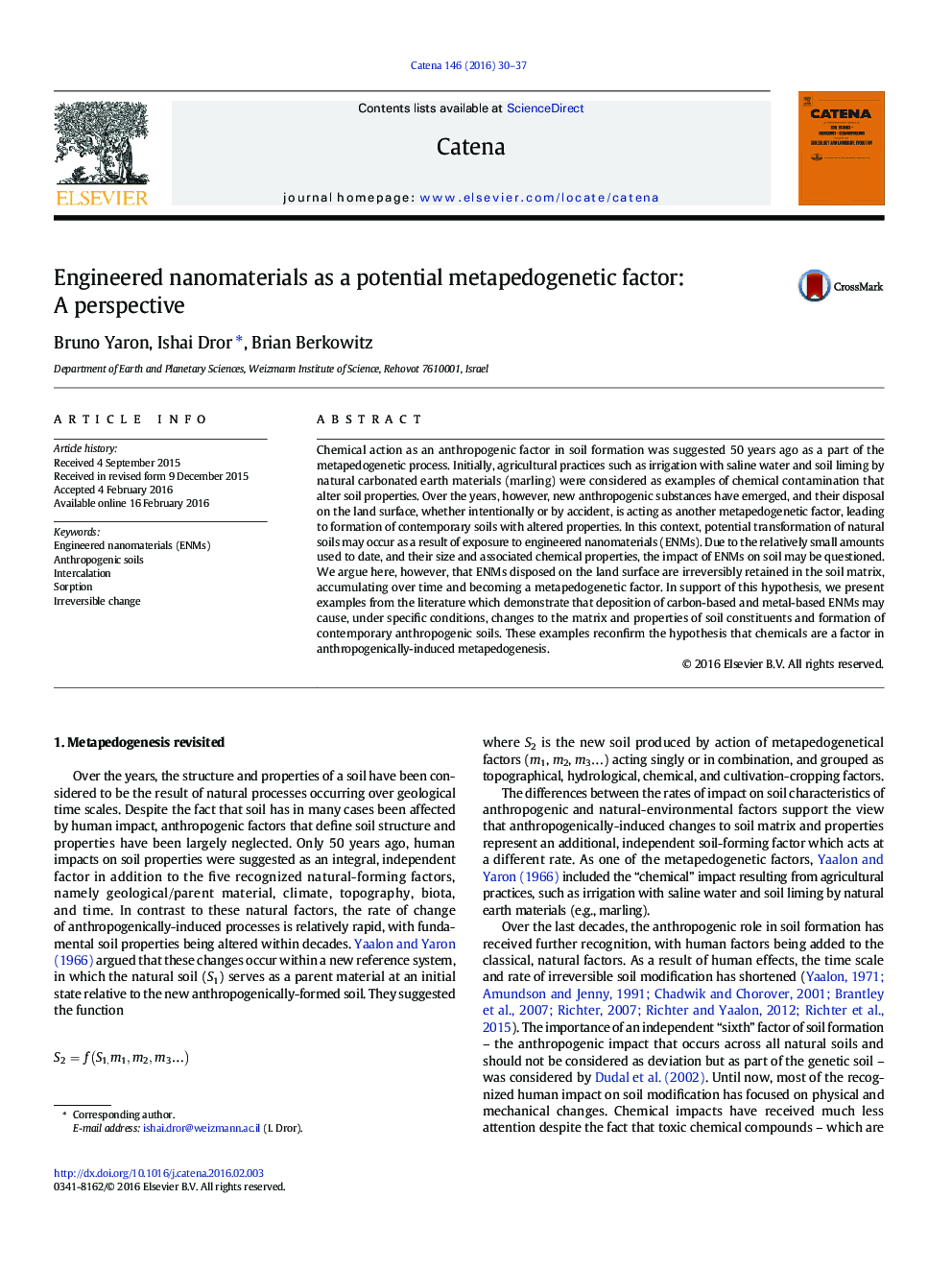| Article ID | Journal | Published Year | Pages | File Type |
|---|---|---|---|---|
| 4570862 | CATENA | 2016 | 8 Pages |
•Metapedogenesis is revisited through ENM–soil interactions.•Chemical contaminants can act as factors of anthropogenic soil formation.•ENMs interact with clays and humic substances and modify them.•Irreversible change of soil matrix and properties is demonstrated.
Chemical action as an anthropogenic factor in soil formation was suggested 50 years ago as a part of the metapedogenetic process. Initially, agricultural practices such as irrigation with saline water and soil liming by natural carbonated earth materials (marling) were considered as examples of chemical contamination that alter soil properties. Over the years, however, new anthropogenic substances have emerged, and their disposal on the land surface, whether intentionally or by accident, is acting as another metapedogenetic factor, leading to formation of contemporary soils with altered properties. In this context, potential transformation of natural soils may occur as a result of exposure to engineered nanomaterials (ENMs). Due to the relatively small amounts used to date, and their size and associated chemical properties, the impact of ENMs on soil may be questioned. We argue here, however, that ENMs disposed on the land surface are irreversibly retained in the soil matrix, accumulating over time and becoming a metapedogenetic factor. In support of this hypothesis, we present examples from the literature which demonstrate that deposition of carbon-based and metal-based ENMs may cause, under specific conditions, changes to the matrix and properties of soil constituents and formation of contemporary anthropogenic soils. These examples reconfirm the hypothesis that chemicals are a factor in anthropogenically-induced metapedogenesis.
